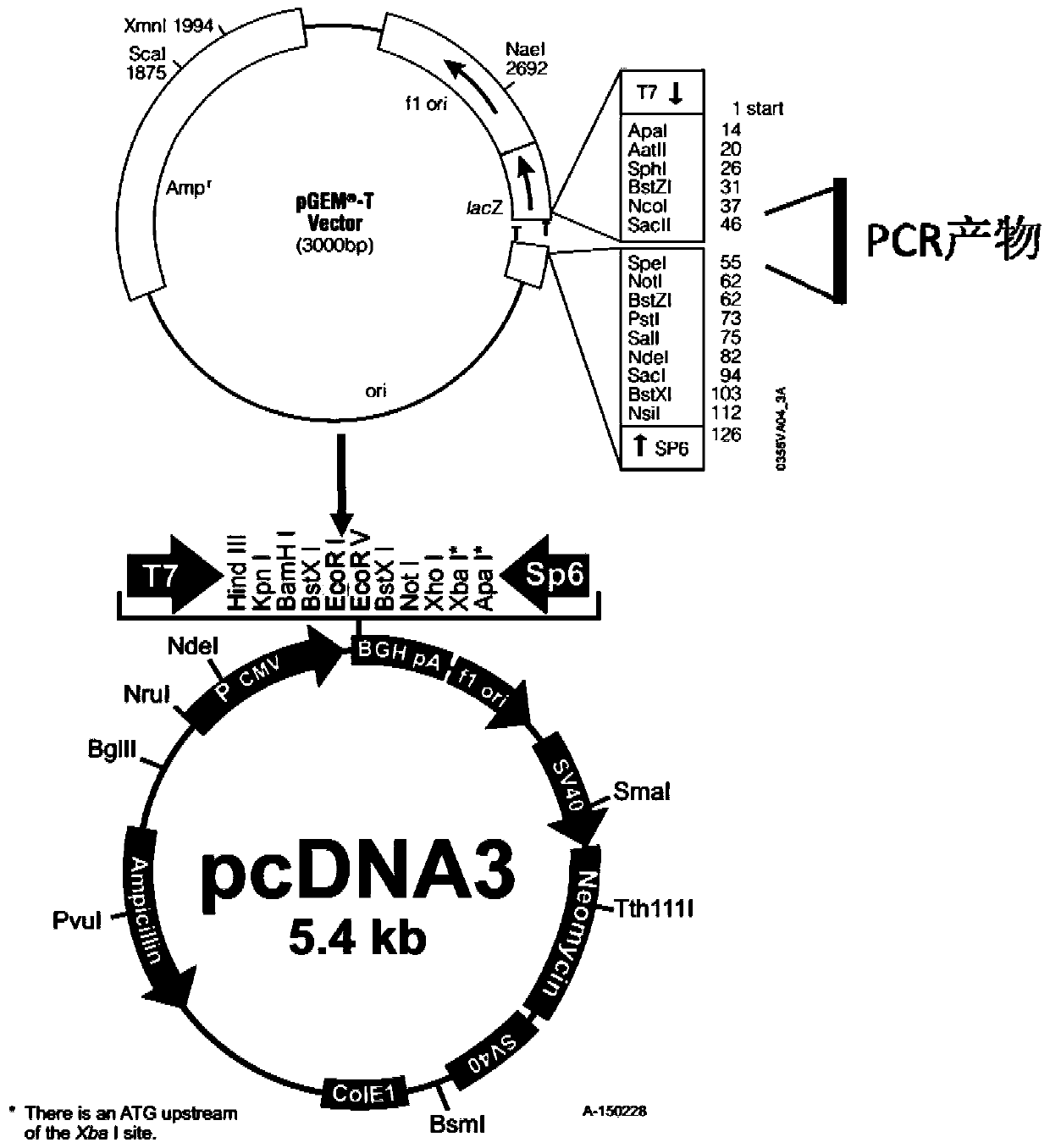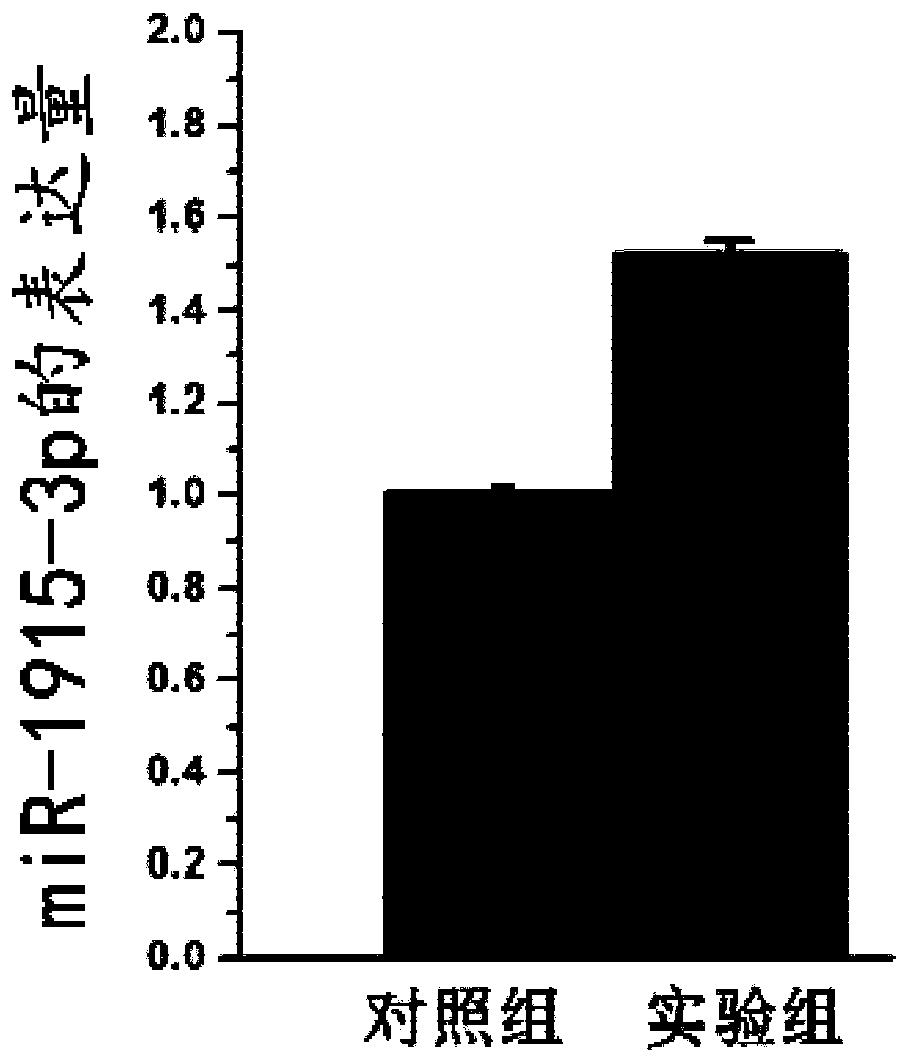Use of nucleic acid in improving cell megakaryotic differentiation efficiency
A technology for megakaryotic differentiation and cells, which is applied to cells modified by introducing foreign genetic material, using vectors to introduce foreign genetic material, DNA/RNA fragments, etc. Eliminate the problems of low production of cells and platelets, and achieve the effects of increased efficiency, high efficiency of megakaryotic induction and differentiation, and high purity of cells
- Summary
- Abstract
- Description
- Claims
- Application Information
AI Technical Summary
Problems solved by technology
Method used
Image
Examples
Embodiment 1
[0033] Example 1 Separation of hematopoietic stem and progenitor cells
[0034] 1. Aseptically collect a portion of the umbilical cord blood of a full-term normal delivery fetus after the umbilical cord is cut, and mix the umbilical cord blood with the PBS solution at a ratio of 1:1, and then mix it with 2.3% ( w / v) of methyl cellulose, let it stand at room temperature for 30 minutes, wait for the red blood cells to settle naturally until the boundaries are clear, and settle the red blood cells.
[0035] 2. Aspirate the supernatant, put it in a 50mL centrifuge tube, and centrifuge at 20,000rpm at 25°C for 7 minutes. Add 5 mL of Ficoll Human Lymphocyte Separation Solution into a 15 mL centrifuge tube, then slowly add 5 mL of cell suspension along the tube wall, centrifuge at 25°C and 1800 rpm for 25 minutes, and separate mononuclear cells.
[0036] 3. Collect interface mononuclear cells and wash with PBS. At this time, hematopoietic stem and progenitor cells are obtained, and...
Embodiment 2
[0042] In vitro induction of embodiment 2 megakaryocytes
[0043] 1. Induction of primary cells
[0044] The mononuclear cells isolated in Example 1 were inoculated into a 6-well plate cell plate, and 2 ml was added to each well at a density of 1 × 10 7 mononuclear cells / ml, add 2 mL of megakaryotic induction medium, and then place at 37°C, 5% CO 2 cultured in an incubator.
[0045] Wherein, the megakaryotic induction medium is obtained by adding 100ng / mL recombinant human thrombopoietin (TPO), 100ng / mL stem cell growth factor (SCF), 20ng / mL interleukin 3 (IL-3) to Stemspan medium, 50ng / mL interleukin 6 (IL-6) and 20ng / mL interleukin 11 (IL-11). Depending on the growth level of the cells, half of the medium was changed every other day, and the culture continued for 20 days.
[0046] 2. Induction of human leukemia cell lines
[0047] Use 2ml of UT-7 cell culture medium (RPMI1640 medium adding 10% fetal bovine serum (FBS)) to take 3×10 5 UT-7 cells were resuspended and tra...
Embodiment 3
[0048] Overexpression of embodiment 3miR-1915-3p
[0049] 1. Transfection of miR-1915-3p was carried out in both isolated primary cells and human leukemia cell lines. Among them, the isolated primary cells were transfected with miR-1915-3p mimics (miRNA mimics are endogenous miRNAs that simulate organisms, synthesized by chemical synthesis, and have the function of enhancing endogenous miRNA) for miR -1915-3p overexpression, miR-1915-3p overexpression in leukemia cell lines by transfection of plasmids carrying miR-1915-3p sequences. Human leukemia cells were cultured in RPMI1640 medium supplemented with 10% fetal bovine serum (FBS), and passaged at a ratio of 1:5 every 3 days.
[0050] 2. For transfection, take 3×10 5 UT-7 cells were resuspended in 1.5ml culture medium, placed in a 6-well plate, mixed with 20pmol miRNA and 10μl lipofectamin2000 and 250μl optiMEM respectively, incubated at room temperature for 5min, then mixed well, stood at room temperature for 20min, and ad...
PUM
 Login to View More
Login to View More Abstract
Description
Claims
Application Information
 Login to View More
Login to View More - R&D
- Intellectual Property
- Life Sciences
- Materials
- Tech Scout
- Unparalleled Data Quality
- Higher Quality Content
- 60% Fewer Hallucinations
Browse by: Latest US Patents, China's latest patents, Technical Efficacy Thesaurus, Application Domain, Technology Topic, Popular Technical Reports.
© 2025 PatSnap. All rights reserved.Legal|Privacy policy|Modern Slavery Act Transparency Statement|Sitemap|About US| Contact US: help@patsnap.com



